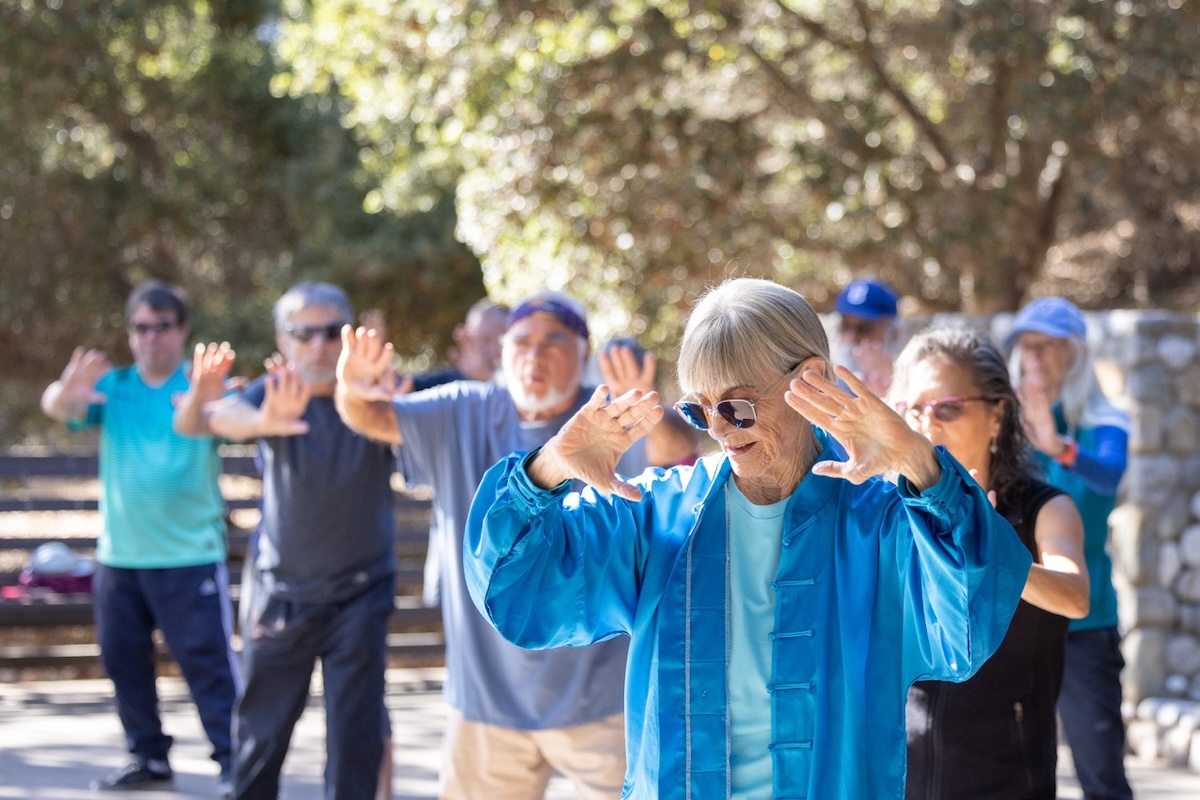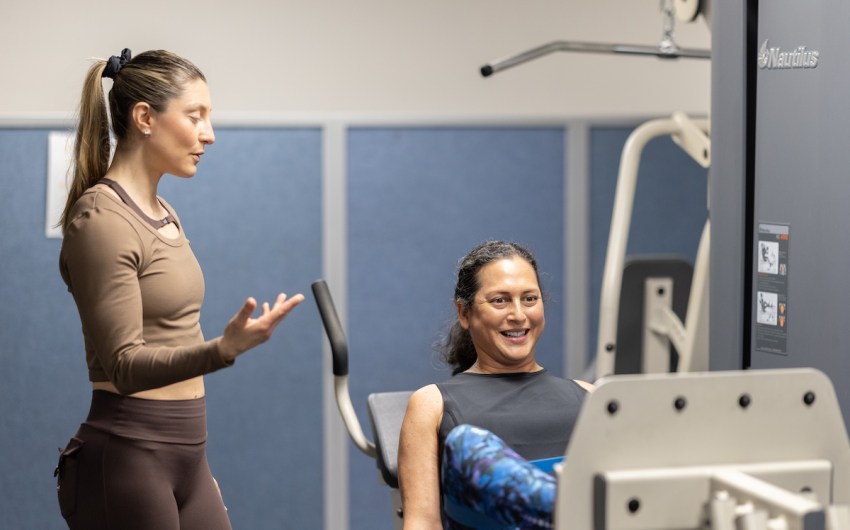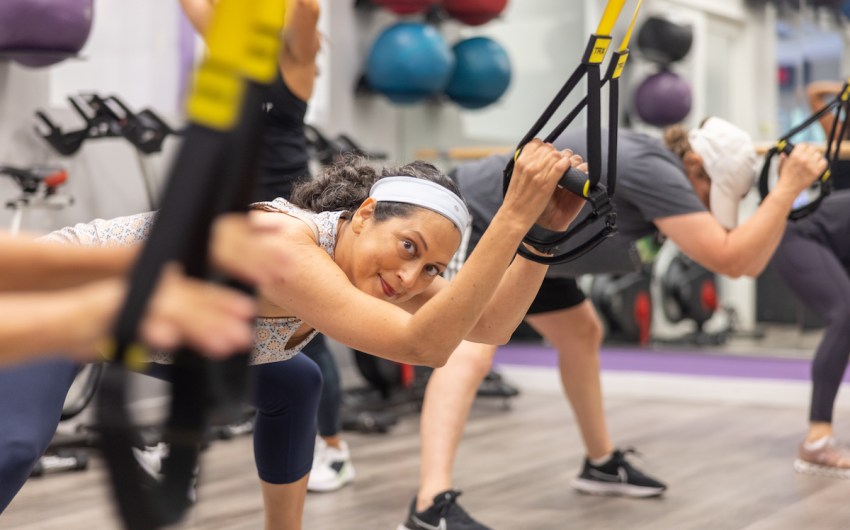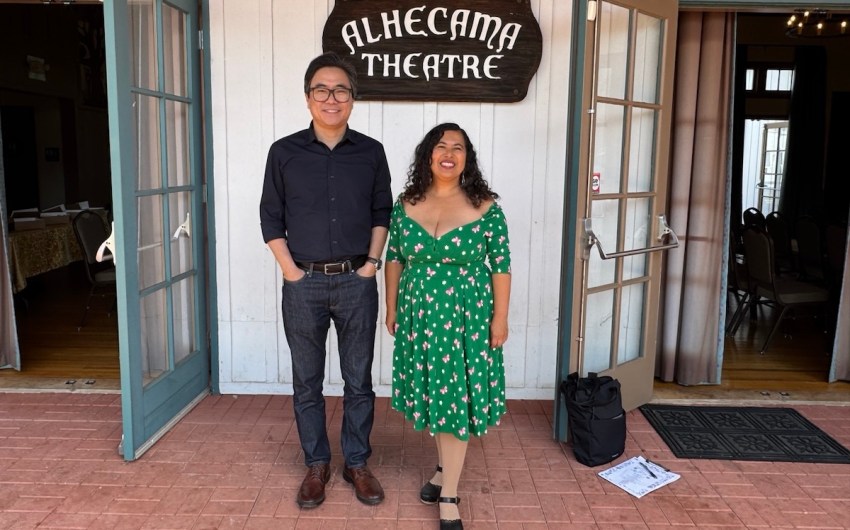Something about tai chi always seems to catch my eye. Years ago, on a visit to my mom in Florida, I noticed a yin-yang symbol painted on a storefront near her house. It turned out to be a tai chi studio, where she practiced enthusiastically for a while. More recently, I spotted a tiny ad in the Independent for beginner tai chi and qigong classes
That’s how I found myself at the Oak Park dance floor on a foggy Saturday morning in late summer, joining about eight other people for a session of Toni DeMoulin’s beginner Dong-style tai chi class.
Tai chi, Toni told us, involves the body and mind. For a novice like me, though, it was a bit challenging to tune out the knot of elderly gentlemen arguing strenuously in the parking lot. I also wondered why the nearby class of tiny ballerinas was dancing not only to Swan Lake and the “Blue Danube Waltz,” but also to “La Cucaracha.”
Nevertheless, I focused on Toni — clad in a crimson coat with mandarin collar and frog closures, black leggings, and red Keds — and followed her movements as she began with an opening salute, warmed us up with Cloud Hands, and then led us through Chasing the Bird’s Tail.
Then she had us pair up, with each partner taking turns pretending to be a “bad guy,” and led us through Step Back and Repulse the Monkey. It was in this pairs exercise, even for a beginner in Toni’s gentle practice, that tai chi really began to feel like a martial art: grasping another person’s arm, pushing against them with the flat of your hand, absorbing their push with your back foot.

After about 40 or so minutes of tai chi, we did some qigong. The difference between the two practices, Toni explained, is that qigong is stationary and is considered a general tonic for health. Tai chi is considered a moving form of qigong.
Toni spends a lot of time correcting form, but she is good-natured about it, emphasizing safety (e.g., avoid injuring the knee by always having a pivot point when moving the foot). When a student observed, “My feet are like this, but your feet are like that” during a certain movement, Toni responded with a smile, “I’m going to say I’m doing it the right way,” which made us all laugh. She also choreographs where students stand, so that as we turn during a sequence of movements, each participant can watch an experienced student going through the moves even if we can’t see Toni. (I still think it would be helpful if she used a microphone.) She also takes requests.
Toni began practicing tai chi in her early twenties, after fleeing an abusive marriage. “I immediately felt my trauma lift,” she recalled. She began studying tai chi daily while working nights as a nurse’s aide, and in short order, she became an instructor. “I have arranged my life so I could study tai chi and do tai chi,” she shared. After the breakup of her second marriage, she led a peripatetic existence for decades, living out of a Westphalia camper van as she taught tai chi in different cities and following her own teacher, Alex Dong, to tai chi workshops around the globe.
In 2017, she was invited to teach tai chi in Beijing. Confident in her knowledge, she wasn’t intimidated at the prospect of teaching tai chi to Chinese people in China as a westerner. Her sponsor got her a small group of students, who she thinks mostly came so they could practice their English with her. “But once they saw how hard my class was,” she said, “they stuck around.” Two of them are now teaching tai chi.

While living in Beijing, Toni learned enough Mandarin to prompt her students (“step forward,” “step back,” “very good”) and order pot stickers. But with her limited command of the language, she couldn’t follow the news. It was her students who told her she had to get out when COVID struck. She left on January 30, 2020, traveling on a deserted freeway to the airport to catch the last plane out of Beijing.
Once back in Santa Barbara, after addressing a health issue, Toni decided to start a tai chi school and has developed a small but close-knit community in a short time. At one Saturday class, a student named Louie brought fresh produce to share from his garden plot; in October, several of Toni’s students gathered at a restaurant to celebrate her 77th birthday. At the very first class I attended, Marty, a longtime devotee of tai chi, proclaimed Toni the best tai chi instructor in town.

Toni’s philosophy is “nothing hard, nothing fast,” and I never broke a sweat or felt my heart rate go up practicing tai chi with Toni, but I enjoyed being in the sunshine, focusing intently on learning the movements (reminding myself to take smaller steps), and remembering to breathe. My calves did get sore from absorbing all those pushes during Repulse the Monkey, but what I appreciated most was learning to balance by pushing my hands out as if leaning on a post. That simple movement was nothing short of revelatory.
In the western mind, the classic image of tai chi may be of groups of elderly people practicing it in parks. The participants in Toni’s classes — a mix of men and women — were mostly middle-aged or older. Even in Beijing, when Toni would ask a young Chinese person why they didn’t do tai chi, the response was “I’m going to — when I’m old.” Toni emphasizes the mental and physical benefits of tai chi for people of all ages and abilities. She recommends practicing tai chi before doing something stressful, like taking an exam, to help you perform better. Jane, who lives with multiple sclerosis, told me that tai chi has helped her balance. When Jane needed to rest during class, she continued doing the movements in a seated position.
This modification seems in harmony with Toni’s goal. “My job,” she told me, “is to give tai chi to the student to own — so they can do it anywhere.”
411: Tai Chi with Toni classes are held at the Oak Park dance floor, located near the Junipero Street entrance close to Calle Real. The next session for beginners starts in January, and private lessons are also available. Visit taichitoni.net for schedule and pricing. Wear comfortable clothing and flat shoes (running shoes not recommended). Sunscreen or hat recommended for daytime classes.

Premier Events
Fri, Apr 25 6:30 PM
Santa Barbara
Providence School Presents “Annie Jr”
Sat, Jul 26 7:30 PM
Santa Barbara
Pink Floyd Laser Spectacular LIVE present SHINE ON
Thu, Apr 24 5:00 PM
Santa Barbara
Sunset Sip & Swirl with Finch & Fork
Fri, Apr 25 4:00 PM
Santa Barbara, CA 93105
Santa Barbara Fair & Expo
Thu, May 01 6:30 PM
Santa Barbara
May Day Strong: Santa Barbara
Sat, May 03 9:30 AM
Santa Barbara
Fun in the Sun Walk & Roll for Inclusion
Sun, May 04 11:00 AM
Santa Barbara, CA 93105
Santa Barbara Fair & Expo
Wed, May 07 6:00 PM
Santa Barbara
Cheese the Day!
Wed, May 14 6:00 PM
Santa Barbara
Cheese the Day!
Mon, Jun 16 7:00 PM
Santa Barbara





















You must be logged in to post a comment.